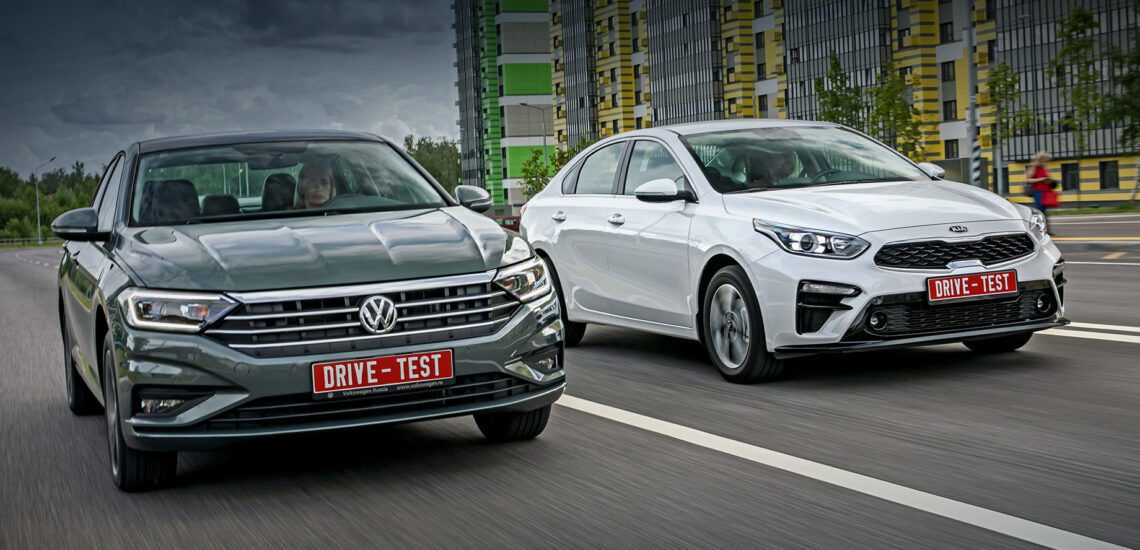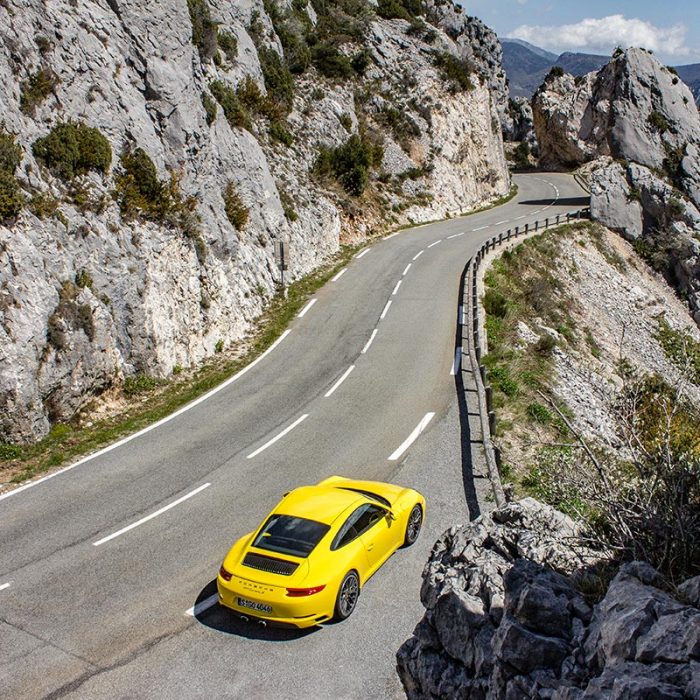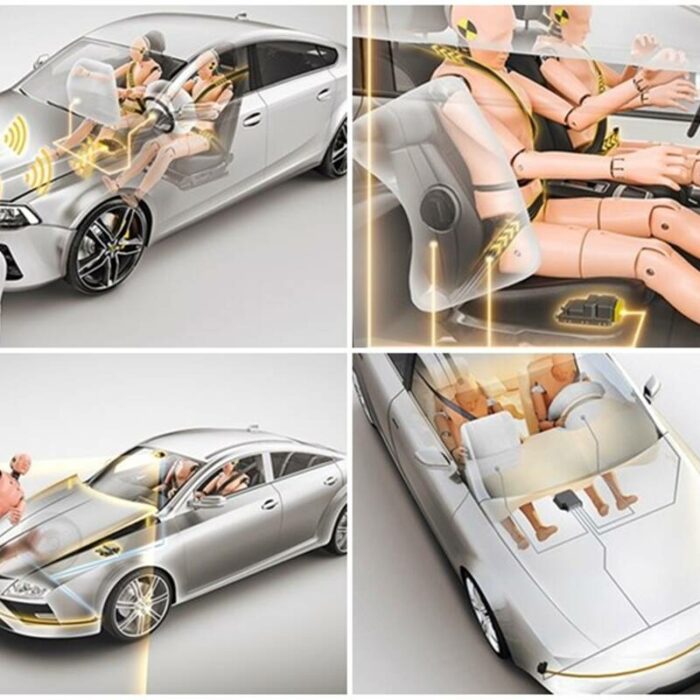Від нового покоління седана Volkswagen Jetta ми не очікували прориву. Навіть не знаючи цін, ми вважали це компромісом після першої зустрічі. Тепер вони відомі, а плутанини ще більше. При відсутності локалізації і з дорогою логістикою Jetta може позмагатися за вартістю тільки з седаном Mazda 3. Інші конкуренти дешевші. Ну а ми беремо неперевірену, доступнішу Jetta з базовим мотором 1.6.
Статистика продажів останнього покоління показує, що дві третини покупців просто віддають перевагу 110-сильній початковій версії. А от у найпопулярнішого седана С-сегменту Kia Cerato співвідношення навпаки, на користь 150-сильного дволітрового двигуна. Тому для порівняння беремо саме таку трикузовку, закриваючи очі на різницю в ціні: тестова Kia, незважаючи на перевагу в потужності, дешевше!
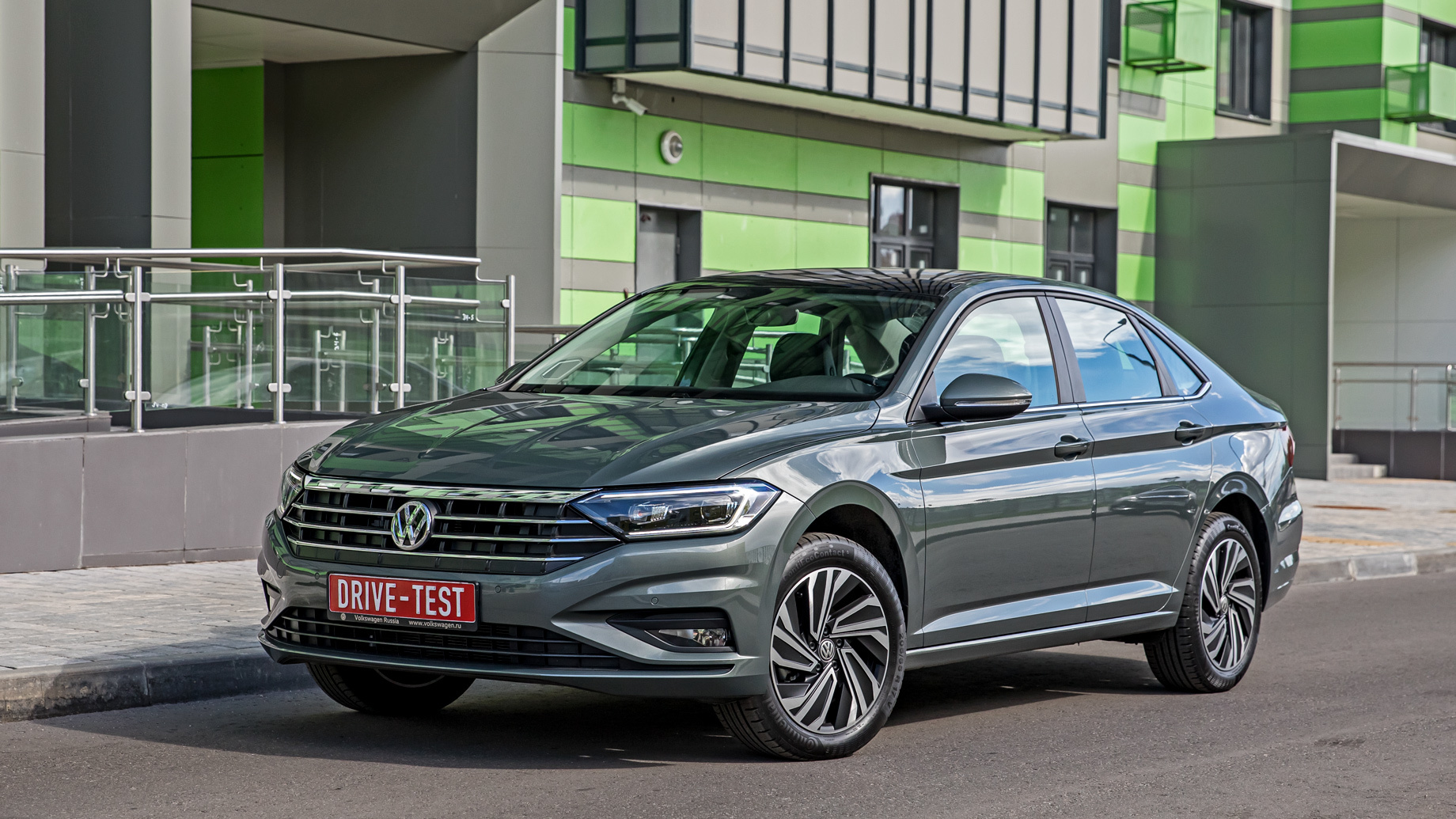
Volkswagen виглядає багатше в першу чергу за рахунок масивного переднього кузова з великою кількістю хрому. Однак колеса візуально випадають з арок вниз, ніби про збільшений до 6,1 дюйма (за нашими вимірами) кліренсі згадали в останній момент, коли арки вже були намальовані. Пластик боковин не німецької розробки надає відчуття технологічності, але підкреслює нерівні зазори кузова. Cerato з більш простою конструкцією збирається акуратніше.
Зовнішні дверні ручки Jetta самі лягають на долоню, а вивірені роками фольксвагенівські лекала взаємного розташування керма, педалей і сидіння використовуються нерозрізаними. Передня панель хороша, обіймає водія з восьмидюймовим екраном медіасистеми, що примикає до електронної приладової панелі. Знову техно! Однак графіка інструментарію мізерна. Є лише три варіанти оформлення плюс десяток кольорів, які відповідають атмосферному освітленню. Перемикання режимів здійснюється кнопкою View на кермі. А що це за клавіша з позначеннями електронних помічників?
Натискаю, а на екрані з’являється відкритий текст: «Клавіша не працює». Jetta 1.6 не має адаптивного круїз-контролю та інших радарних систем. Мабуть, видаляти виявилося дорого.. Від поганого до гіршого. Бардачок позбавлений підсвічування, задні пасажири — дефлекторів, кришка багажника лише наполовину обрізана і «прикрашена» оголеними дротами. Ви відкидаєте сидіння назад, і вас дивують гострі краї металу в отворі, що веде до багажника. У Kia тут все заховано в пластику, а решта перерахованих нюансів питань не викликають.
За кількістю м’якого пластику Cerato не програє, хоча салон оформлений скромніше. Компонування елементів управління вивірено не гірше, а фізичні кнопки медіасистеми зручніше сенсорних в Jetta. Роздавши інтернет зі свого смартфона, можна скористатися вбудованим навігатором. Навіть якщо він не зовсім інтегрований (викликається через меню, а годинника в салоні ніде немає), для великих міст він незамінний. Вбудований навігатор Volkswagen не знає пробок. Для дротового підключення до телефону потрібен рідкісний «шнур» зі штекером USB-C.
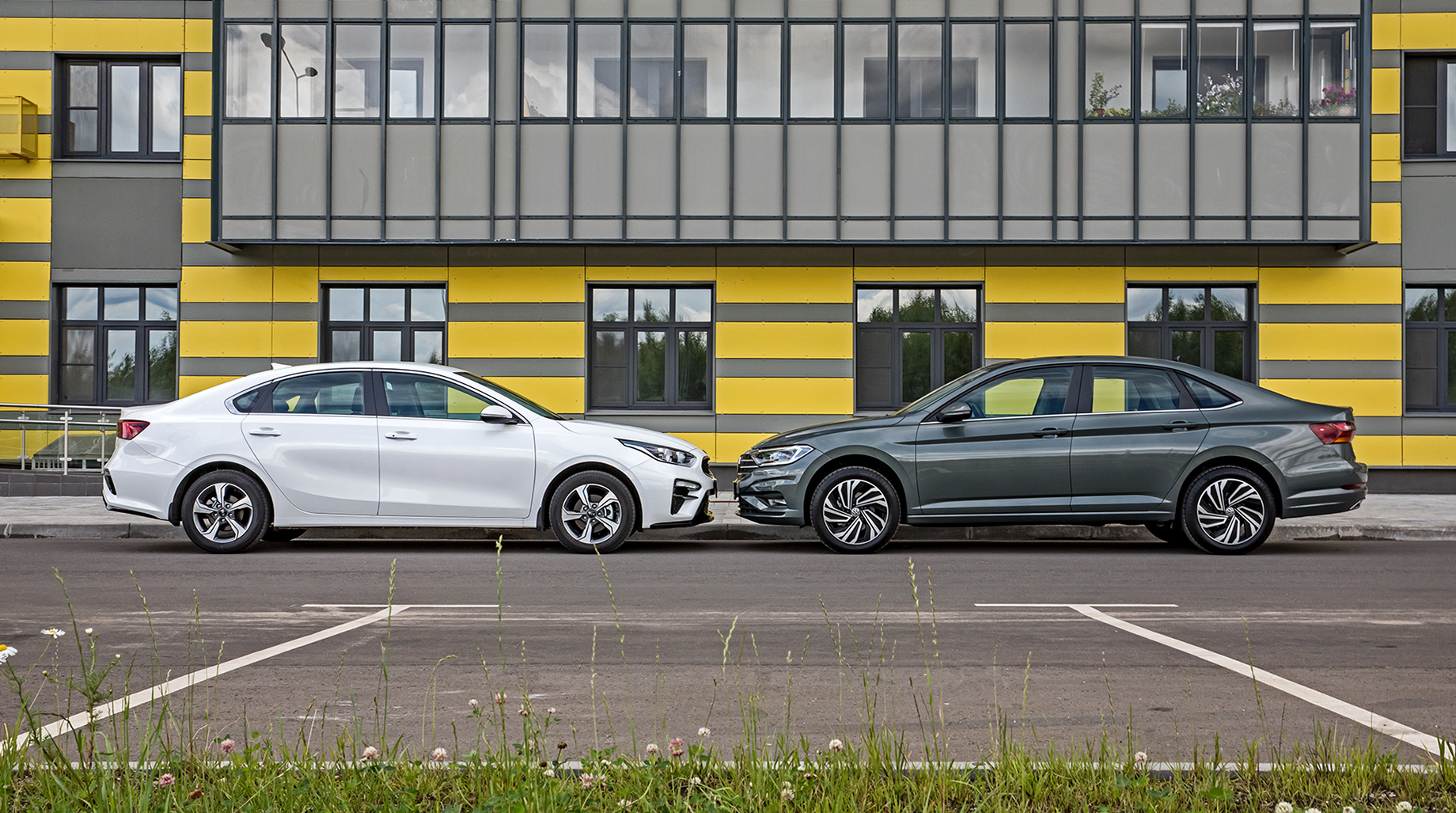
Місткість багажника у двох седанів однакова. Відсіки схожі за обсягом, скромною обробкою з тендітними полицями і голим металом під ними, висотою завантаження і можливостями трансформації. У Cerato отвір кришки на три сантиметри нижче, але є повнорозмірна запаска і ремінь для кріплення невеликої сумки до боковини.
Хоча вибір таксистів очевидний (погляньте на ціни!); на задньому сидінні дорогої Jetta комфортніше. Краще оформлена, коліна високого пасажира не впираються в спинку переднього, на дверях є відмінна ручка для природного положення руки, а третій середній пасажир не створює натовпу. . Є повний підігрів сидінь, тоді як у Kia гріє тільки подушка. У Cerato на пару сантиметрів менший запас місця в області колін. Особливо це помітно завдяки жорсткій задній частині.
Дволітровий Cerato вже брав участь у наших порівняльних тестах. У той момент виникли питання щодо плавності ходу на тлі седанів Hyundai Elantra і Toyota Corolla. Тепер у нас є машина з масивними 16-дюймовими колесами. Ситуація вирівнялася, але не покращилася. По хорошій дорозі Cerato їде дуже благородно, а також досить тихо і ефективно гасить великі ями. Однак підвіска ніби множить короткі хвилі асфальту, особливо на великих швидкостях. Ізоляція від високочастотних вібрацій, спричинених мікропрофілем шорсткого асфальту, також могла б бути кращою.
Мексиканський седан благородніше на рівній трасі. Є навіть преміальний натяк на розгойдування; Jetta пружно ковтає дорожню дрібницю. Але з таких магістралей краще не з’їжджати. Ями з гострими краями створюють гуркотіння такої сили, що ми змушені застосувати до Volkswagen той самий епітет, що й до шасі Kia: жорстке! Акустичний комфорт двох седанів також на порівнянному рівні. У Cerato є індивідуальні шини, але життя придатне для життя. У Jetta краще приглушені дорожні і зовнішні звуки, але двигун чути частіше, ніж в Kia. Його безлике хрипіння не викликає нічого, крім нудьги.
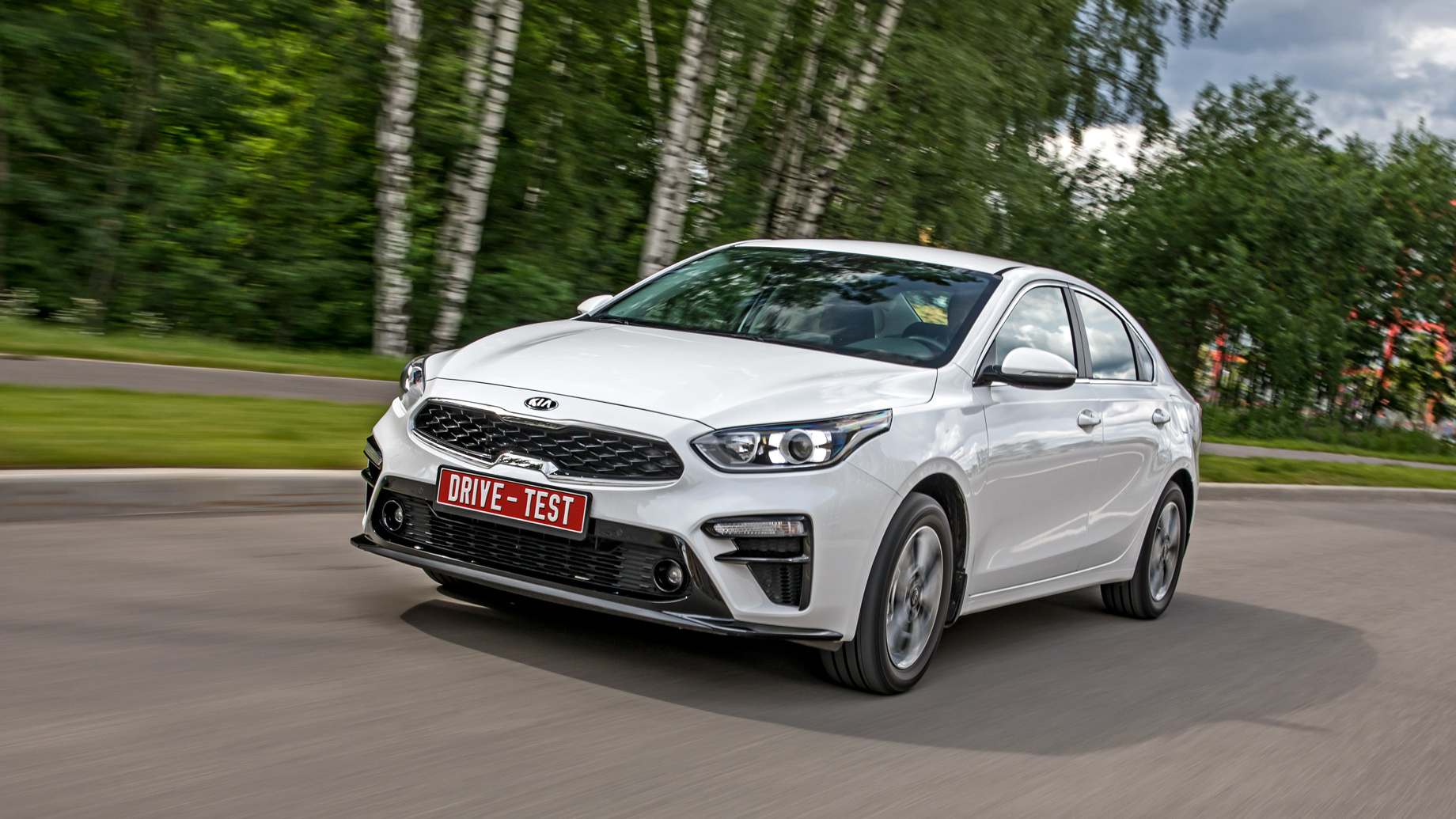
110 к.с. для великого Фольксвагена мало, особливо 155 Нм крутного моменту. При регулярному розгоні в потоці від світлофора Jetta набирає 3500-4000 оборотів на другій передачі. Хоча після 2000-2500 об / хв в салоні вже шумно. Розгін практично неможливий без стрибка шестиступінчастої АКПП на дві-три передачі вниз, а то й чотири. Ці зрушення також непомітні. В результаті Jetta їде ривками, голосно і не швидко. А ось гальма хороші: настройка педалі на службові уповільнення майже стандартна, а от Kia вимагає надмірних зусиль.
Зате радує тягою. На початку ходу акселератора реакція у Cerato більш жвава, і розгін «до металу» при обгоні не проблема, як у Volkswagen. Коробка також шестиступінчаста, і перемикає передачі теж не плавно, але принаймні робить це рідше. Кориснішим є і режим Sport, який загострює реакцію, не забороняючи автоматичній коробці переходити на вищу передачу, на відміну від конкурента. Спорт включається рухом селектора, а режими Eco, Comfort і адаптивний Smart (користі від нього не помітив) кнопкою.
Jetta приємніша на звивистій дорозі. Так, автомобіль не може обійтися без кренів в поворотах, а реакції не вистачає точності Volkswagen з європейськими підвісками. А ось з управлінням траєкторією проблем немає, як і з реакцією на кермо. У Кіа кермо здається занадто затиснутим. Навіть на дворових швидкостях відчувається навмисне повернення до нульової позиції. Зусилля, необхідні під час паркування, також вищі. Звикнути до нього не складно, але такого задоволення, як від водіння Jetta, отримати не вийде.
Проблема в тому, що всі задоволення в цьому Volkswagen дозовані і не збалансовані між собою. Шикарний дизайн розбивається об слабкий силовий агрегат. Комфортний салон контрастує з плавністю ходу та шумом двигуна. Звичайний крутний двигун 1.4 TSI вимагає додаткової оплати. Тобто тестовий седан у такій же комплектації обійдеться у велику суму! Навіть якщо зрівняти опції і додати до нашої Kia шкіряні сидіння з електроприводом для водія, світлодіодні фари, 17-дюймові диски, то отримаємо дешевшу версію GT Line+. Постав мат, Джетта.
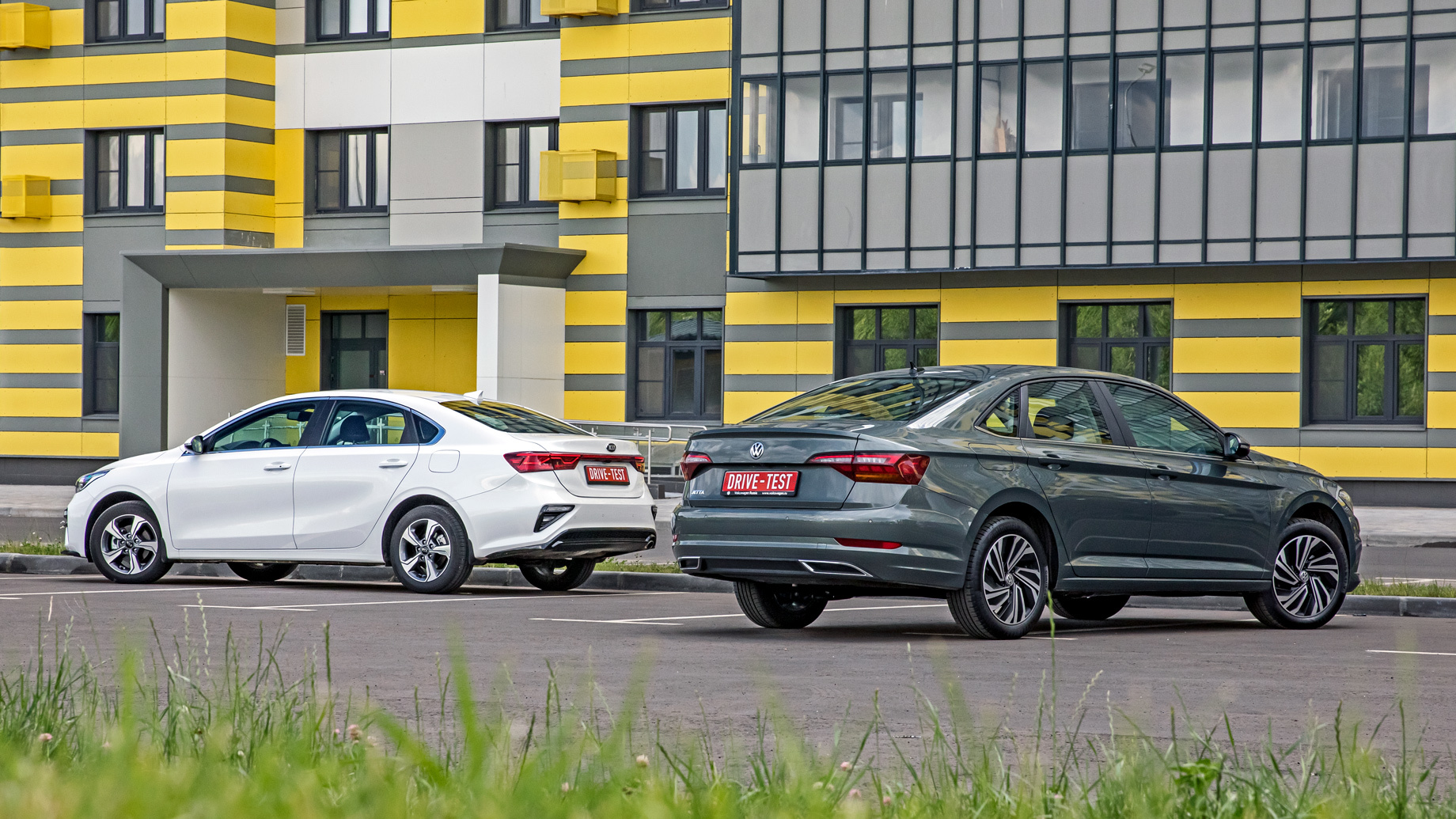
Наш колега запропонував шукати цільову аудиторію Jetta в корпоративних автопарках, де прийнято використовувати автомобілі Volkswagen. У нашому бізнес-центрі навіть є подібна організація. На Audi A8 їздять топ-менеджери, керівникам ключових відділів роздають A6, допоміжним – Passat, а регіональні представники їздять на Polo чи Rapid. Jetta – це транспорт білих комірців, які не мають Passat за комплектацією. Важко уявити інше використання мексиканської Jetta.
Це переклад. Оригінал можна прочитати тут: https://www.drive.ru/test-drive/kia/volkswagen/5f105d4dec05c4147d0000e7.html

Опубліковано Жовтень 27, 2022 • 6хв на читання

